Quick, name some fermented foods. What did you come up with? Beer? wine? cheese? pickles? Let’s not forget yoghurt, kefir, sauerkraut, miso, kombucha, natto, tempeh, vinegar, and bread. These and more were the focus of the second annual Freestone Fermentation Festival in Sonoma County, California, May 15, 2010.
This was my first time at this “low-waste, alcohol free, pet free, smoke free and must have fun event.” I went with my blogging friend Laureen Hudson, her daughter (Michael stayed in Petaluma with Miriam and Aurora’s big brothers), and Laureen’s friend Lisa.
Held at the beautiful and green Salmon Creek School (pause a moment to lament that we don’t live near enough for my daughter to attend a school with such clean air and lack of chemical stink), it was a mix of hippie aesthetic with practical advice, local businesses, and of course samples galore.
Fermentation roughly falls into two categories: dead and alive. This event covered both. Alcohol and bread are the two best examples of the former. You can’t make them without fermentation (excluding things like crackers or tortillas) but we eat them for the taste and general nutrition (and they preserve foods without winter or electricity). There are few to no probiotics. Probiotics are what make ferments live. You eat these for all the usual reasons but also for the nutritional powerhouse of the yeasts and bacteria. Yoghurt, kefir, krauts, and pickles are the best known live ferments (though they aren’t always sold live).
As regular readers of my blog know, I make a variety of vegetable ferments (krauts and pickles). And I long to make more. I’ve tried my hand at coconut yoghurt and have plans to make water kefir next. Another project on my list is dairy-free cheese (something pungent, like blue).
Many attendees lamented the lack of alcohol at a festival dedicated in part to its production. But there were workshops covering spirits; my guess is logistical concerns kept out the samples. Cheese (from cow, sheep, or goat milk) was another large component. Since dairy and I don’t get along well, I had to skip that part. No one there makes non-dairy cheese but I will make this my mission to find out how.
The Beverage People in Santa Rosa has classes and equipment/ingredients for sale for a wide variety of fermented products, but their specialities are beer, wine, and cheese. My friend Gabe Jackson, who works there, even made us a case and a half of blackberry wine (picked from our garden–and yes, a post on that is coming!). He’s promised to keep his eyes open for information on non-dairy cheesemaking. His dairy cheese class at the festival was a big hit.
I attended classes on sauerkraut and pickle making, both with demos and fairly straightforward advice for beginners. Kathryn Lukas, the owner of The Farmhouse Culture, demonstrated a simple cabbage ferment. The woman next to me sounded peals of joy when Kathryn said don’t bother to pound your cabbage, just massage it a bit with salt to release the juices. Since it had never occurred to me to pound my veggies, I just smiled, but now I wonder what I do that isn’t necessary or what little things I might be missing. Kraut making is pretty easy, but there is a lot that can go wrong too.
Another thing that that hadn’t occurred to me was the sugar content of the vegetables. Usually with ferments sugar is a good thing, even necessary, as it feeds the yeasts. But *aha moment* what makes krauts go off often is the yeasts gaining control; krauts and pickles are a bacterial ferment, not so much yeast.
Most of our kraut is red onion. Most of the time it comes out fabulous. Once in a while we get an unwelcome surprise. I asked Kathryn her opinion and she said it was likely the sugar in the onions. Which can vary a lot. I don’t know how to fix this…can I add some acid? Can I measure the sugar to know which onions to avoid? I don’t want to mix with large amounts of other vegetables.
Kathryn says to keep your vegetable blends no less than 75% cabbage so they come out well every time. That works great for kim chee, which I also make, but sometimes you want something different. I asked her if there was a chart of different buggies (desirable and undesirable) but she didn’t know of one. I would find that very helpful, since I know what my off ferments look/smell/taste like and could match the bugs.
Jill Nussinow (the “Veggie Queen“) taught pickles. These should be easy but even more can go wrong than with krauts. I’ve made cucumber pickles and had one fantastic batch, a couple okay batches, and one batch we couldn’t eat. Turnip pickles were so-so and tomato pickles were a total fail (though I sat near someone who said her green tomato pickles come out great, so I’ll give it another try). Cool temperatures seem to be pretty important (you can get away with summer temps with kraut) and so is good technique. Other than that, I’m not exactly sure why mine fail so often.
This very expensive crook was much touted at the festival. What do the experts say? does it make better kraut or pickles? The answer is no, but it does make it a lot easier. You still have to weigh down the veggies (you never want them to contact air); this crock does come with weights. But apparently when you fill the outside rim with water and put on the lid, you get a seal that lets CO2 leave without letting air in. So less chance of trouble.
In addition to the pricey rimmed crock, Cultivate in Sebastopol had a variety of crocks and other equipment, at decent prices.
One ferment I’ve been wanting to make for a while is water kefir. Dairy kefir is pretty common and makes a drink similar to liquid yoghurt, though the buggies are totally different. Instead of using a bit as a starter, like you do with yoghurt, you strain and save the kefir grains, which are like tapioca. You put the grains into your new liquid and go again. The grains will multiply with time so there are plenty to share.
You can use dairy kefir grains in a non-dairy liquid and they will turn into water kefir grains. It’s the same minus a few cultures that only reproduce with dairy. So you can’t make dairy kefir with water kefir grains.
Water kefir is delicious and can be made fizzy or flat. Apple juice is a common base, so is coconut water (not to be confused with coconut milk). But you can make it with water too, as long as you add some sugar to feed the yeastie beasties. Like with all ferments, the bugs eat the sugar and you’re left with a low (or at least lower) carb product.
The folks at Cleansing Ministries Rejuvenation Center in Santa Rosa gave a demonstration on making ginger root beer water kefir. I can’t wait to make it. Once I get my hands on some water kefir grains, I’ll blog the full recipe and my results. Miriam adores kefired apple juice, which she had at a friend’s once, but I am allergic to raw apples and apple juice and found that the symptoms kicked in after too many samples of apple ginger kefir.
Nowhere could you see the hippie/mainstream dichotomy of the festival better than by looking at the water kefir demo and the “Fermented Foods and your health” talk. Karen Miller-Youst admonished us not to make kefir in a room where there had been anger and Dr. John La Puma gave us isolated sounds bites about the medical wonders of fermented foods.
John started us off with his credentials (part his resume and part the famous people he’s worked with), accompanied by a glossy flyer advertising his book. The flyer was similar to the talk, filled with little tips like “cooked carrots and cooked tomatoes are better for you than raw” (something that is not only banal but wrong: soft or ground carrots make it easier to get the nutrients out but raw whole ones still have them and there is exactly one nutrient, lycopene, in tomatoes that is present in higher amounts when cooked, not exactly a reason to give up raw produce).
But onward to the talk. What would you consider the number one reason to eat live fermented foods? John’s was that probiotics lower the incidence of antibiotic-induced diarrhea (he even said it twice and had it on a slide). Yep, it’s true, but… His other reasons were about how probiotics are good for various gut conditions. Also true. But very allopathic. You can’t be a doctor unless you treat disease, and all bodily workings are mostly separate from each other. Right? Not really.
Granted, I left the talk before the end (the room was giving me a headache, the only problem I had in the building), but not once did I hear him say anything about the normal role ferments play in human health. How every traditional culture has them in spades. How they exist in nature as well and are part of non-agricultural societies cuisines. How they work and why they are not just “healthy” things we can eat but essential to keeping our bodies balanced.
Fortunately, the organizers and attendees in Freestone needed no convincing. The emphasis was on how to get more ferments in our lives, not why. A nice playground and a butterfly ride for the kids, tons of samples (I could could have drunk Farmhouse Culture’s pickle juice all day), foods for sale, and live music rounded out the day. I’ll be back next year!


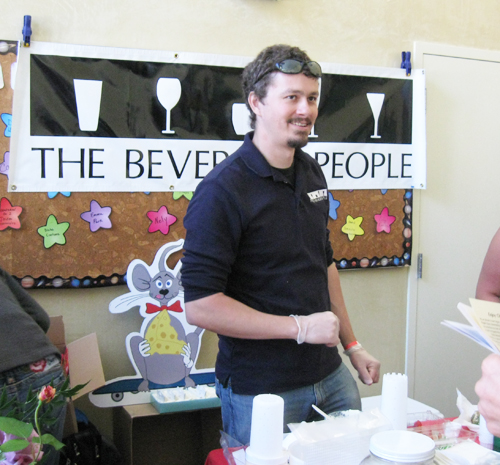
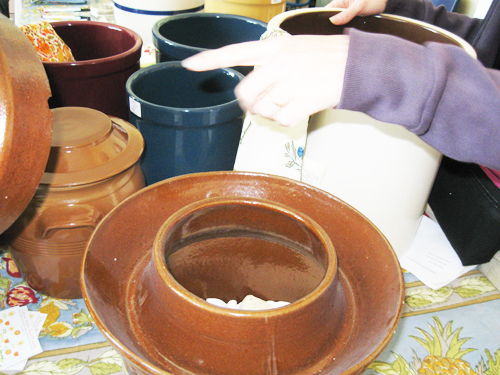
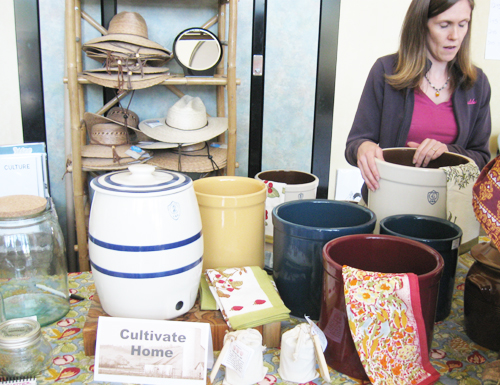
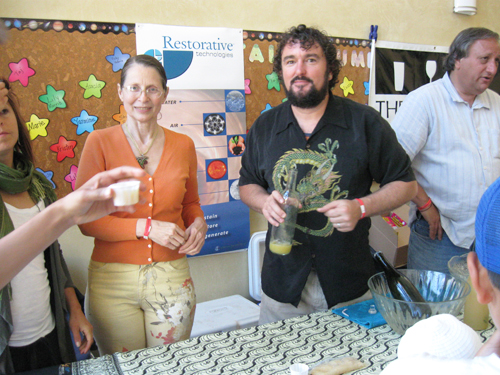
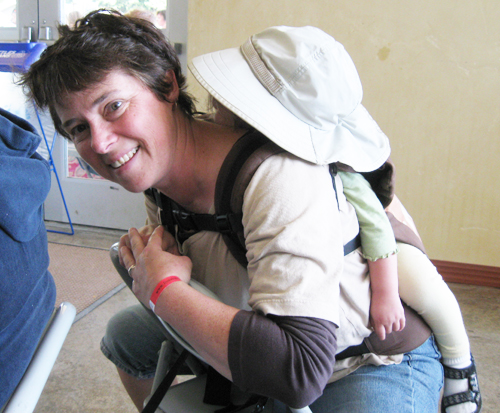

5 responses so far ↓
1 Jessica // May 22, 2010 at 6:11 pm
Fabulous post, Cyndi! I think I might have to come up for this in 2011. I need to start fermenting more regularly again, especially since I already own a fancy fermentation crock.
2 Tamar // May 22, 2010 at 6:44 pm
I wish I could have gone. Maybe if it becomes popular enough, it’ll become a 2-day event.
3 admin // May 23, 2010 at 7:37 am
Jessica: How do you like your crock? How is it different from all other crocks?
Tamar: They have a blog and email, let them know. The event was packed, even though they were pretty well spread out. All sessions were standing room only with 3 session areas and overlapping times. It would not be unreasonable for them to double the days. Or maybe they’ll move it to a Sunday, especially if you offer to teach a class on Korean ferments (they were all half an hour). Kim chee! yum! I’d go!
Cyndi
4 Fermentation! | ElementalMom // Jun 2, 2010 at 4:15 pm
[…] a few weeks ago, my pals Cyndi, Lisa, and I went to the Freestone Fermentation Festival. Cyndi’s blog is far more thorough […]
5 Water Kefir | ElementalMom // Sep 13, 2010 at 6:11 am
[…] was introduced to this stuff at the Freestone Fermentation Festival which I attended with my pals Cyndi and Lisa. The folks at Cleansing Ministries Rejuvenation Center in Santa Rosa gave a demonstration […]
Leave a Comment